SDM NEWS 2011
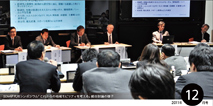 |
Design thinking shared at SDM - create innovation through cooperation Design thinking is one of our strengths at SDM. Its main methodologies are taught in "Design Project ALPS", our international collaborative education program in which students form teams to solve social issues and development issues innovatively by visualizing issues from multiple perspectives based on design thinking methodologies and techniques. |
Recently, SDM has successfully applied this approach outside of the campus. For example, results of the project with Akita City were presented and well received at an academic conference. In January 2012, AGRI laboratory and Mogami-Machi officials conducted their unique "training tours for young people", a project that was first proposed during the Lab's study tour to Mogami-Machi. SDM also is collaborating with a shared office incubation center "Kannai Future Center mass x mass" in Yokohama. We continue to collaborate with local municipalities and are preparing for an event in Fukushima in December 2011. On the business side, venture companies that were nurtured through the Design Project ALPS are now in operation. Design thinking is playing an important role in various academic-industry joint research projects from technological development to social system development. Several companies have started utilizing design thinking proposed by SDM and various venture capital projects are in incubation. Watching design thinking bloom in both industry and academia is deeply gratifying for us and motivates us to further our efforts. |
|
Laboratory Profile
VSE Center (Japanese VSE Center)
Associate Professor |
TOPICS
1. JAXA seminar 2011
2. Intensive course by Professor Paul Schoensleben
3. The third Project Leader Training Course
4. SDM WEB seminar featured in Nikkei newspaper
5. SDM Research Institute Symposium "Think about future regional mobility"
6. Students in Management and Financial Strategy class visit Nishijima Corporation
7. Professor Nakano lectures at the 4th "i-college"
8. The fifth workshop of 2011 Design Project ALPS
9. Active node releases a smart phone application
|
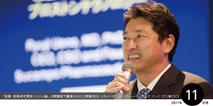 |
Our research at SDM What is distinctive about the research we conduct at the Graduate School of System Design and Management (SDM) is that we cover a broad range of topics and that the problem-solving approaches we use are consistent and academically systematic. To put it simply, we design and manage our research based on system perspectives. |
As I wrote in the September 2011 issue of SDM News, unlike pure scientific research, our stance is to thoroughly structure a value network around the objects, which are clients' and social needs as a system, and to bring out what is really required before conducting research. Likewise, unlike pure humanistic research, our research does not consist of just surveys or suggestions; we also propose a system, design it accurately from the general to specific, and even verify its validity and effectiveness from the general to the specific. The object of research can be anything as long as we follow the approach mentioned above. In my laboratory, for example, research topics include robots, computer input devices, human perception and cognition, regional revitalization, the optimal energy mix, teaming education and its application into company management and consulting, and research on "system", "laugh", "break out of one's shell", "concentration", "symbiosis", "happiness", and "sensation". All research follows the basic approach of SDM: respond to social needs, design as a system, and reliably validate it. We generate productive outcomes from various research approaches at SDM by focusing on what is really needed without getting mired in the details. |
|
Laboratory Profile
Lab profiles do not appear in this issue.
|
TOPICS
1. Open Lecture on "Medical System and Research Development of Medication"
2. SDM Information Session at INSA Toulouse
3. Science School on Hearts in "Children's Festival" at Higashiyamata Elementary School
4. "The future of Japanese system design and management - Discuss the future of innovation of technological and societal systems made in Japan" at the Keio Alumni Association Meeting
5. Dean and Professor Maeno and Professor Teshima featured in Nikkei web seminar "Re-design the future world - what is SDM, a new holistically integrated study?"
6. APCOSE2011
7. Special Lecture by Mr. Niels Malotaux on "Predictable Projects"
8. "Foundation of Model-Driven Systems Development", Intensive Lectures by Mr. Laurent Balmelli
9. Special Lecture by Professor Heinz Stoewer on "Project Management and Systems Engineering"
10."Link with Fukushima" wins the Best Award in "Student conference to think about reconstruction of Japan" |
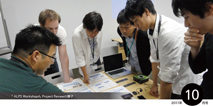 |
SDM midterm plan - share and implement our vision The Graduate School of System Design and Management (SDM) has evolved in the three and one-half years since SDM was established. Since this April we have reaffirmed SDM's initial vision, strategy, and tactics and discussed how to restructure them. We are compiling the findings in the midterm plan. |
The three pillars are 1) sharing the vision and issues, 2) a clearer, more committed operation, and 3) reforming the design project. In 1), we invite all students, faculty and staff to share SDM's vision and concepts and to show more clearly the steps SDM should follow; attract excellent students and foster them to play important roles after they complete their education at SDM. In 2), we clarify the relationship between each professor's role in research, education, and operation as a system and visualize each professor's midterm goals to proceed together. In 3), we reorganize ALPS, our acknowledged design project, and expand it not only for student education purposes but also to help companies and municipalities solve problems in a place where open and real innovations occur. We are also conducting a full review of the curriculum, international relationship development, entrance examination, alumni involvement, personnel matters, and finance and then making structural changes where necessary. Through this midterm plan, we would like to further disseminate SDM's vision, which solves various problems from multiple perspectives of (system) x (design) x (management), and contribute to innovation and happiness in Japan and the world. We need and appreciate your continuous guidance and support. |
|
Laboratory Profile
Mobility Systems Management Center
Professor |
TOPICS
1. Project Management makeup course (PMP® exam preparation)
2. Commencement Ceremony and Entrance Ceremony
3. The fourth workshop of 2011 Design Project ALPS
4. Report from exchange students
5. Intensive lecture by Professor Ockie Bosch
6. "Medical System and Research Development of Medication" lectures in Washington D.C.
7. Yosuke Nakajima et.al. win Best Paper Award by The Japan Society of Competitive Intelligence
8. Project Assistant Professor Makino et.al wins the Best Presentation Award by Human Interface 2011
9. Avert Blackout Project
10.Report on SE/PM training and CanSat Launch at the Black Rock Dessert
11.Professor Sasaki receives 2011 IEEE Medal for Environmental and Safety Technologies |
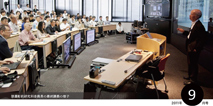 |
Types of students who can make the most use of an SDM education Recognition of the Graduate School of System Design and Management (SDM) has surged in the three and one-half years since it was established. The other day, a Stanford University professor said to me "I am hearing good things about SDM, and that it is a new type of graduate school in Japan. |
" While I am pleased to see that our reputation in academia is growing, we still have applicants who ask "Is it possible to do scientific research?" or "Can a literature major follow the lectures?" Of course, my answer is yes to both questions. Students can conduct scientific research in the most advanced technology fields and they can also conduct very humanistic research in the social science fields. Our stance is that true scientific research should be based on the systems approach because it broadly considers various perspectives, such as those of the stakeholders in society who will benefit, environmental awareness, and safety concerns, for example. Likewise, very humanistic research should not consist of only survey studies but should include hypothesis verification research or system design and verification & validation research, which sort out problems from a systems-engineering-based systematic perspective. SDM would like to welcome new students who are inspired to learn this discipline that helps them to see a problem from various perspectives as a system and then to separate the problem into components to be solved one by one. Of course the scale varies depending on the problems. The real pleasure of SDM is studying various problems together with students and faculty who have a wide array of interests and sense of purpose. The research style varies from "very deep as well as broad" on the most advanced technology research to "very broad and deep" on changing systems in Japan and the world. We are encouraging ambitious people to apply for admission to SDM and become involved in viewing problems as systems, regardless of their field or size. |
|
Laboratory Profile
SDC: Social Design Center
Professor |
TOPICS
1. Final Lectures
2. Open SDM
3. The third workshop of 2011 Design Project ALPS
4. AGRI laboratory report on study tour of Tohoku
5. SDM Information Session |
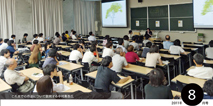 |
Why is system design and management study so powerful? You'll find the answer in this issue. Although it may sound odd, team problem solving, which is part of the core studies in system design and management, resembles a neural network in that both can solve various problems. |
If a perception, an artificial neural network, has enough interlayer neurons and learning processes are executed adequately, it can express every nonlinear calculation. Abstractly speaking, it can solve any kind of problem, just as a team can. Theoretically, if a team of experts in every field can thoroughly discuss a problem, they will find the best solution for it. Of course, it is impossible to gather enough experts to cover all areas or to have discussions that are extensive enough to find the best solution. In the real world, like at SDM, the best possible teams are formed and team members conduct efficient discussions by utilizing various perspectives. In other words, SDM's framework is already powerful enough to solve various problems. All we need to do is to share the framework among SDM and the stakeholders of the particular problems and cooperate to find solutions. We wish to apply SDM's framework and solve various problems of our time--from science and technological issues to political, economic, and foreign affairs. If you have such issues, SDM would like to hear from you. |
|
Laboratory Profile
Visible Light Communication Laboratory
Train Services Laboratory
Professor |
TOPICS
1. SDM Special Open Lecture "Application of standardization in business strategy - making the most use of in-house intellectual properties"
2. SDM Special Open Lecture "Interactive Design"
3. Look cooler in "waso- style"
4. Launch of Kannai Future Center
5. Motoko Takeuchi wins the Best Paper Award at Euro SPI Conference
6. Report on Earthling 2011 |
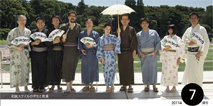 |
Jigasakko What have we been up to this especially hot summer (due to energy-saving measures) just four months after the Great East Japan Earthquake? The Graduate School of System Design and Management (SDM) initiated various projects to overcome the disaster. |
Practical projects include 'Avert Blackout Project' with TOKYU CORPORATION, IBM, and Elephant Design as well as 'Fukushima Support Project' planning with IBM and Fukushima Prefecture.
Among unique and playful projects, SDM has been encouraging "Waso style" (Japanese traditional clothing) on campus to emulate teacher Fukuzawa Yukichi's pioneering spirit. Fukuzawa, who advocated the equality of all social classes at the end of the Tokugawa feudal regime, is said to have preferred casual commoner's clothes rather than the formal hakama dress of the samurai. This summer, SDM is promoting "Waso style" among faculty and students in emulation of Fukuzawa's spirit, which combines the pursuit for cutting-edge knowledge with respect for Japanese traditions. Not only is Japanese traditional clothing "cool" to the eye, being attired in extraordinary style gives us an opportunity to think innovatively about designing the future. We see this as an expression of SDM-ness. Together with this campaign, we have designed a Japanese folding fan emblazoned with the words; jiga sakko (a call to set new standards and create new traditions). We hope students and faculty will passionately engage in creating a new future while playfully engaging with the past. SDM's trans-domain research collaboration will continue to lead in designing new technological systems and social systems. |
|
Laboratory Profile
VERSTA Lab: VERSTA Laboratory
Social Life System Laboratory
Professor |
TOPICS
1. "Waso style" (Japanese traditional clothing) project
2. Avert Blackout Project
3. 2nd Urgent meeting "Future energy system design for overcoming earthquake disasters"
4. Seminar on research on high accuracy positioning technologies
5. SDM Special Open Lecture "New smart Japan carved out by smart grids"
6. Special Lecture by Professor William A. Crossley
7. SDC Meeting Disaster Restoration Design 01
8. The first VSE forum
9. Associate Professor Kohtake becomes the Chairman of the IMES (Indoor GPS) consortium
10. The second workshop of SDM 2011 Design Project ALPS
11. Stanford Center for Design Research (CDR)/ d. school workshop
12. Researcher Koichi Homma wins the Incentive Award, from the Museological Society of Japan |
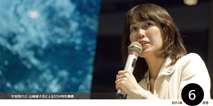 |
Accelerating our activities as a global center of design thinking The first workshop of ALPS (Active Learning Project Sequence) 2011, one of the marquee lecture series of the Graduate School of System Design and Management (SDM), was held on May 13 and 14. |
Institutions around the world are developing courses to teach innovation through group projects; the d.school at Stanford University, which focuses on the innovation of design, and D-Lab at Massachusetts Institute of Technology (MIT), which focuses on utilizing technology to solve poverty issues, are especially well-known. How SDM differs is that our trans-domain teams design not only technological systems, but also social systems, by absorbing the advanced education available at Stanford University, MIT, and Delft University of Technology (TU Delft) and combining it with Japanese methods and ways of thinking. Moreover, our design thinking features more than creating ideas; it validates their feasibility from a systems engineering perspective. We offer Design Project ALPS to our students and, currently, are also earnestly promoting it for use at academic conferences and in social activities. For example, we have presented the effects of design project education and new methods derived from the initiative in international conferences and started regional development activities with public organizations and conducting joint research with consulting firms. Please do not hesitate to contact us if you are interested in our design thinking to design a new world. We would like to create a better world together. |
|
Laboratory Profile
LRU Lab : Local Resources Utilization Laboratory
Guest Professor
Associate Professor
Professor
Project Professor |
TOPICS
1. The first workshop of SDM 2011 Design Project ALPS
2. CESUN 2011 Annual Meeting
3. Intensive lecture on "Risk Management" by Visiting Professor Gilles Motet
4. Professor Takashi Maeno interviewed in iTiD Consulting homepage
5. Visit to Sumitomo 3M Ltd. Customer Technical Center (CTC)
6. SDM Special Lecture by Naoko Yamazaki
7. Briefing session of regional revitalization in Akita featured in newspapers
Notice : Overview of Two Master Courses designed for diverse student needs
Notice : Announcing the third Project Leader Training Course
|
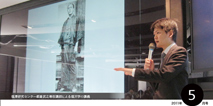 |
The new SDM has kicked off This year got off to an unusual start; the entrance ceremony was postponed due to the Great East Japan Earthquake on March 11 and the concerns about radiation. The new students who gathered for orientation, however, were filled with spirit and resolve: the Graduate School of System Design and Management (SDM) will change the world. |
Spring semester started on April 5, as scheduled, and the audiences at the first lectures and Q&A sessions were so dynamic that we almost forgot we were in Japan. Our new students want to study the earthquake disaster and nuclear problems in a realistic, practical, and systematic way. Thus, this year's commitment to "teach and learn more thoroughly than ever" has resonated with them and they are finding that keeping up with the discussions, assignments, and group work is both exhausting and exhilarating. It has been a busy month. On April 16, SDM held its first "Poster Networking" event with students, faculty members and researchers in the SDM Research Institute. On April 23 and 24, we hosted the annual introductory camp at the Collaboration Complex. Temporary research supervisors were assigned to every new student. The doctoral students' research presentations were held on April 9 and the interim presentations by master's students who have completed over than six months of study were held on April 22 and 23. Several more research events are on the calendar this year. Whatever may come, SDM will continue to lead, taking inspiration from the actions of Keio Gijuku in the chaotic period right after the Meiji Restoration. We appreciate your continuous support and assistance. |
|
Laboratory Profile
MDSD Lab: Model-Driven Systems Development Laboratory
UD Lab: Universal Design Laboratory
Professor |
TOPICS
1. Project Management makeup course (PMP exam preparation)
2. SDM Poster Networking
3. Orientation and Introductory Camp for 2011 Spring and 2010 Fall enrollees
4. Urgent meeting: "Future energy system design for overcoming earthquake disasters"
5. English Training Courses
6. Project Professor Toshiyuki Yasui's article featured in FACTA"
7. "Barrier-free Recreation and Sports" features KEIO Footsal Adventure 2010
|
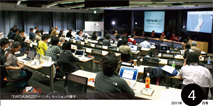 |
The new academic year begins with a focus on our three roles:education, research, and contribution to society As the new dean of the Graduate School of System Design and Management (SDM) and SDM Research Institute from April, 2011, I am grateful to my predecessor, founding Dean and Professor Yoshiaki Ohkami, for his strong leadership of SDM and SDM Research Institute. I am honored to follow in his footsteps. I would also like to share some recent thoughts with you. |
It has been over one month since the Great Tohoku-Kanto Earthquake on March 11. We mourn those who lost their lives and sincerely hope that the people affected by the earthquake can recover as early as possible. We must now ask ourselves if SDM has played a role. SDM was established to solve various problems facing a stagnating Japan and the world by treating phenomena as systems. As individuals, we are weak; indeed, the force of Mother Nature makes us all feel incompetent. But together at this moment, should we return to the starting line and after an exchange of ideas, passion, and will, design the new era? This national disaster is a result of problems with a nuclear system, which is a symbol of man-made large-scale complex systems, and the extremely long-term behavior of the natural system. This is similar to various global issues such as global warming, international safety assurance, and north-south problems. These problems are complex and intertwined. In order to solve them, we must address different levels of abstraction, various system levels, and space and time scales. In other words, we need to address immediate issues we face now as well as more philosophical, ideological policy issues that require national and international collaboration simultaneously, consistently, and creatively without destroying the present structure. That is, we must see both the details and the big picture. Further discussion should draw on the wisdom of the international community. Since SDM has the methodologies to do so, we believe that SDM should stand up to solve issues facing the world. In its first three years, SDM developed the education system, build a solid research base, and defined its basic structure. Now, SDM is delivering specialized research and providing an unparalleled education to its students. In 2011, SDM will further our efforts in all three roles; improve our education, expand our research, and contribute to society by helping to solve major issues facing our society. This includes not only academic research outcomes but also outcomes from collaboration and policy proposals. We will make such a leap this year. Students, faculty members, staff and researchers will work together in all three roles. We will report the outcomes in the SDM newsletter. We need and appreciate your continued guidance and support. |
|
Laboratory Profile
Lab profiles do not appear in this issue.
|
TOPICS
New faculty self-introductions
1. Activities for contributing to society from micro to macro
2. Commencement Ceremony
3. Agriculture laboratory opened the Keio natural farm in Hiyoshi.
4. Report on EARTHLING2011
5. Project Assistant Professor Makino wins Best Paper Award for Young Researcher of Virtual Reality Society of Japan
6. Mr. Matsuo starts a business
Notice : SDM launches systematic curriculum to strengthen collaboration and integration of technologies and social science.
|
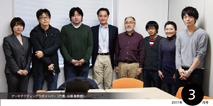 |
The Graduate School of System Design and Management (SDM) marks a milestone this month. Since opening in April 2008, we have awarded seven Ph.D.s and 107 Master's degrees. We currently have 199 students enrolled and are well on our way to achieving our initial targets. |
SDM began with the idea of training talented leaders in the drastically changing society of the 21st century from Japan and other countries in a true fusion of the sciences and humanities, enhanced by interaction among generations. We achieved our goal of creating a revolutionary graduate school, where the faculty and students alike take on challenges in unexplored domains. Though "System design" is not a familiar academic endeavor to most, a large number of companies and organizations see its value. Our ideas have resonated with researchers, educators, technologists, and business people in Japan and many other countries. All of these organizations and individuals have provided unstinting support for our activities. We should also note that we received critical support from the Ministry of Education, Culture, Sports, Science and Technology 21st-century COE Program in the planning stages and benefit from the Ministry's Global COE Program's support today. The generous support and subsidies we have received from numerous companies and the Japanese government have been instrumental in the SDM's development, and we wish to express our gratitude for these substantial contributions. April 2011 marks the start of a new academic year as well as some significant changes for the SDM. The first thing you will notice is a substantial rejuvenation of the full-time faculty. We expect our new professors to take on even more ambitious challenges. We have identified the best directions for our educational and research activities, and have obtained a number of "best practices" and "lessons learned" over the last three years. Our new faculty has been instrumental in analyzing them to formulate a more systematic and unified curriculum, to upgrade our international project design subject, ALPS (Active Learning Project Sequence), to bring in more corporate participation, and to add greater depth and variety to our Master's studies. We are confident that our students, if they are willing to make use of this drive and power to tackle difficult problems, will emerge as the new concept leaders in the 21st century, not just in technology systems, but in social systems as well. We hope to see Japan become more comfortable with the concept of system design, and to combine our skills at precision design and manufacturing with the integrated concepts of system design and management. As I step down from my position as Dean, I would like to express my heartfelt gratitude to the many companies, organizations and individuals who have provided such generous support for the Graduate School of System Design and Management and our Research Institute, and I would like to ask for their continued support as they go forward. |
|
Laboratory Profile
Architecting Lab
Associate Professor
Professor |
TOPICS
The Great Tohoku-Kanto Earthquake - Director, SDM Research Institute Dean, Graduate School of System Design and Management
Yoshiaki Ohkami -
Thoughts on retirement: SDM and crisis management
- Taketoshi Hibiya Professor, Graduate School of SDM - 1. 3rd International Symposium on Symbiotic, Safe and Secure System Design "How to Realize System Design Seeing both the 1 Trees and the Forest"
2. AY2010 foreign exchange students
3. Report: Study Group on Financial Regulation and Supervisio
4. Team wins 2nd prize in Tokyo Institute of Technology's Mobile App Contest "iPhone" app for business people
5. Degrees awarded and doctoral thesis titles
Notice : A Call for ALPS 2011 projects
|
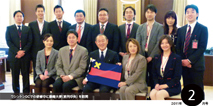 |
This issue focuses on SDM's international relationships and the steps we are taking to further strengthen those connections. |
This year's exchange program between Technical University of Delft (TU Delft) has ended successfully; five TU Delft students in Japan went home after their final presentation about their stay and five SDM students visiting TU Delft safely returned. Their reports show that they learned a lot from their stay. I enjoyed reading the students' reports on their various activities; some focused on attending lectures, some were engaged in research, and they all made a lot of friends and enjoyed student life. Moreover, all students participating in a short-term visit to INSA Toulouse in France and in the intensive lectures on medical and pharmaceutical systems in Washington D.C. reported that they were fully satisfied with the trips. All returned home with a renewed sense of purpose in their studies and research. By enhancing international collaboration with top-ranking universities, we continue to encourage short-term or mid-term study abroad programs and train those who will be active on the front lines in the world. |
|
Laboratory Profile
Semiconductor Technology Laboratory
SSES Lab: Strategic Social Education System Lab
Professor |
TOPICS
1. "Medical and Pharmaceutical Research and Development Systems" intensive lectures in Washington D.C.
2. Broadcasting of Beethoven Concert in 3D
3. A group of British researchers visited SDM.
4. Presentation by exchange students from TU Delft
5. SDM Special Lectures by Daijiro Hashimoto and Junichiro Kawaguchi
6. Joint workshop with Cleave
7. Yoko Ohzono, PhD wins Best Paper Award 2010
8. Joint lectures by three graduate schools - Collaboration Complex Music Festa 2011
|
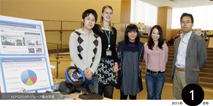 |
It gives me great pleasure to address you at the start of a new year. I hope that this will be a year of great development and advances for all of you. |
We have entered the second decade of the 21st century, carrying with us enormous issues to address: the economy, national finances, jobs, the environment, and security. There are many who bemoan a decline in the energy and enthusiasm of our youth and see dangers in Japan's future, but in strategic systems engineering, we see this as a time to put our best foot forward and tackle new challenges and capture possibilities. At the end of last year, Keio University was honored with a visit from US Ambassador John V. Roos, who gave us an encouraging message that I would like to share with you. The ambassador said that Japan is a country that shares the democratic value of the free market economy, has an educated population, has a culture that values work, and has enormous amounts of capital. There is no need to be even the slightest bit pessimistic. (Mainichi Shimbun, January 9, 2011) He went on to talk about the many tangible and intangible assets that we have, from our natural environment to our high ethical standards, and he encouraged us to open the way to a new future by giving strong incentives to young people, entrepreneurs, and women and designing policies and programs to help them make a difference. This is the direction that the Graduate School of System Design and Management wants to go, and I'm confident that our presence and role will only grow in the future. The faculty at the school is as committed as always to taking on this challenge, and we look forward to your guidance and support. |
|
Laboratory Profile
: Information Systems Perspective Investigation and Requirement Engineering Lab
Special Research Associate Professor
Professor
Professor |
TOPICS
1. SDM earns high marks in supplement issue of Nikkei Human Resources Magazine
2. Reporting meetings for ALPS 2010 proposer companies and discussions with ALPS students
3. Intensive lecture by Professor Rashmi Jain
4. Report on Systems Integration 2010
5. Book by Professor Toshiyuki Yasui reviewed in "Nikkei Business"
6. Nakajima and Yagita present at ICBTT2010
Notice : Call for themes and proposer companies for ALPS 2011
|













